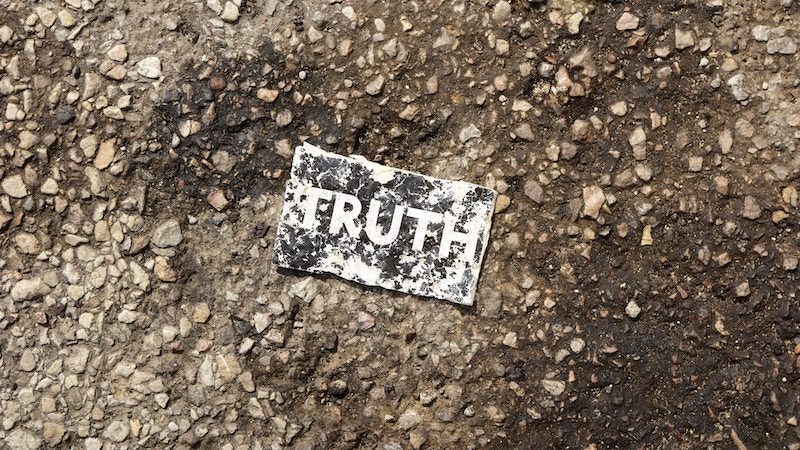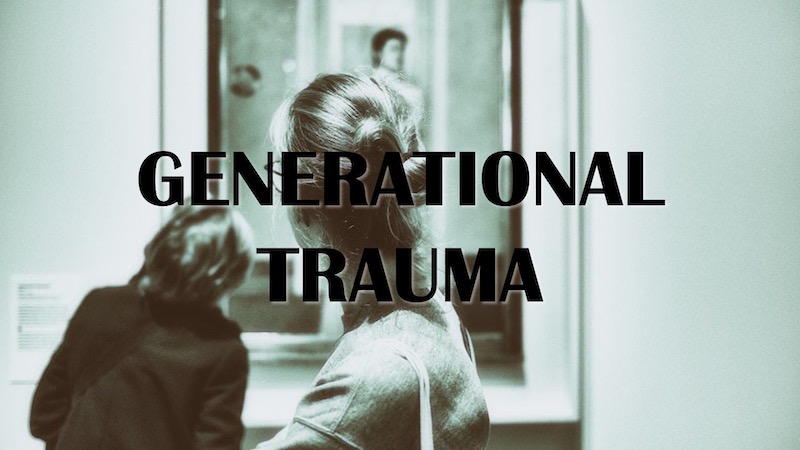With our family history, only the truth will serve
- 4 August 2023
- Posted by: Michael H Hallett
- Category: Generational trauma ,

On my journey to clearing generational trauma, there have been several quotes that’ve stuck with me. In something of a ‘duh’ moment, it’s only just struck me they all have a common theme: truth.
What is truth?
This seems a strange question to ask. Yet what something is, is a question I often ask in my blogs—often followed by a quote from Wikipedia. So, let’s ask it here. I’m off to Wikipedia now, with no idea what I’ll find. Back in a sec!
Here it is: “Truth is the property of being in accord with fact or reality.”
This in turn raises the question of what reality is: “Reality is the sum or aggregate of all that is real or existent within a system, as opposed to that which is only imaginary, non-existent or nonactual.”
Here’s the first of those quotes I mentioned, from Russian philosopher P. D. Ouspensky’s In Search of the Miraculous: “I already knew then [in 1913] as an undoubted fact that beyond the thin film of false reality there existed another reality from which, for some reason, something separated us.”
By Wikipedia’s definition, a ‘false reality’ is a contradiction in terms and cannot exist.
The “slick”
Yet the truth is that all of us live in this false reality. Our family histories provide ample evidence of its existence.
Wars, grief, poverty, financial ruin, affairs, and divorces. Previous generations of our family have all been battered by traumatic experiences, which our ancestors tried to conceal or minimise. These overwhelming experiences come down to us as generational trauma.
Truth gets trampled into the dirt, from where it’s hard to reconstruct.
When our family’s past isn’t truthfully communicated, we compensate by unconsciously creating a false narrative. Unknowingly, this false narrative forms a ‘thin film’ over what actually happened to our ancestors, how they felt about and reacted to difficulties.
In her family memoir The Architect of Desire, Suzannah Lessard writes of “the slick that was concealing from us the truths of our lives together and alone.”
A century apart, a Muscovite philosopher and a New York writer reached an almost identically phrased recognition that our perception—and thus our definition—of truth is, well, untruthful.
‘Normal’
How can that be? Why hasn’t everyone noticed?
To answer that I turn to The Politics of Experience (1967), a savage indictment of the current state of humanity by psychiatrist R. D. Laing: “What we call ‘normal’ is a product of repression, denial, splitting, projection, introjection, and other forms of destructive action on experience.”
This destructive action is the multi-generational impact of trauma.
Because everything that’s traumatic is shameful, unconscious shame becomes the lock that holds Laing’s destroyed normality in place. What we normalise becomes invisible.
It’s from this place of normalised trauma that we live our conscious lives, explore our family history, define our personal and collective truths—and fear to penetrate the slick.
“Your conscious action is only a drop on the surface of a sea of unconscious processes, of which you can know nothing—about which, indeed, you are afraid to know.”
— Wilhelm Reich, The Function of the Orgasm
“That which presses upwards”
In Zen and the Art of Motorcycle Maintenance, Robert Pirsig writes: “The truth comes and knocks on your door. You say, ‘go away, I’m looking for the truth.’ And so, it goes away.” We get stuck beneath the veneer of Ouspensky’s supposedly non-existent ‘false reality’.
But ‘another reality’ reveals itself when we choose to challenge our fears and embark on the hero’s journey—philosopher Joseph Campbell’s phrase—of uncovering our family’s truth.
Carl Jung, founder of analytic psychology, was in no doubt about the importance of this when he wrote that humanity’s task is to “become conscious of that which presses upwards from the unconscious.”
What presses upwards is all that’s unprocessed, incomplete, and traumatised in our lives and our family narrative.
Only the truth will serve
Only one approach resolves these conflicting realities: complete commitment to the truth.
Lessard writes that “Being committed meant believing in the humanity of the participants and believing that there was a truthful way to know the story that would restore meaning and reveal love.”
As Lessard describes in her memoir, coming to know the family story truthfully is a painful process of uncovering the lies, half-truths, and elisions one by one. No one comes out of this smelling of roses, which is why “believing in the humanity of the participants” is critical.
Shame is both the lock and the key. It’s the lock that holds the false reality in place. It’s also the key that unlocks the “truthful way to know the story.”
Yet with our family history, only the truth will serve. It’s time to turn the key.
Next steps
For further resources on generational trauma, both free and paid, please click on this image.
Photo by Michael Carruth on Unsplash

